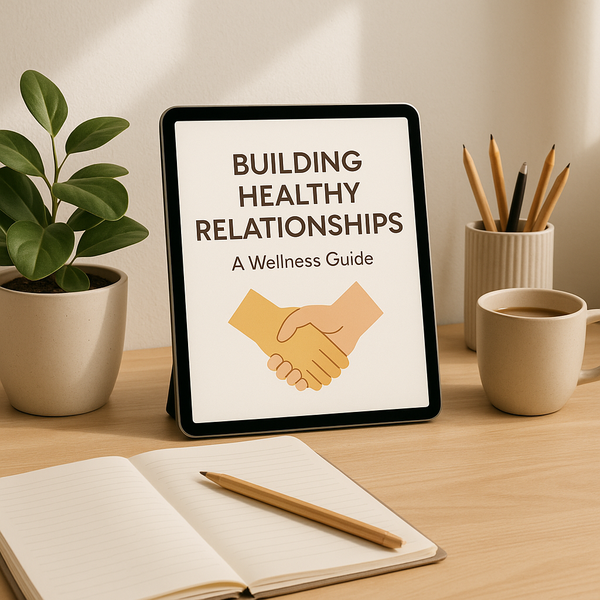
Building healthy relationships requires effort, understanding, and patience. These relationships are crucial for emotional well-being and support during life's ups and downs. We'll explore key strategies for fostering these connections, focusing on the foundations, communication, embracing differences, building trust, and fostering emotional intimacy.
Understanding the Foundation of Healthy Relationships
Healthy relationships rely on mutual respect, trust, and communication. Respect involves valuing each other's opinions and acknowledging differences, creating an environment where individuals feel heard and appreciated. Trust is developed over time through consistent honesty, reliability, and transparency, ensuring each person feels secure and confident in the relationship. Building a foundation of trust requires patience and persistence, as it involves demonstrating dependability in fulfilling promises and being accountable for one's actions.
Effective communication is the third pillar, allowing both parties to express themselves freely without fear of judgment or ridicule. Active listening and empathy are essential techniques that help avoid misunderstandings and unnecessary conflicts. These skills enable individuals to better understand their partner’s perspective by genuinely acknowledging their emotions and viewpoints. Strengthening these foundational elements creates a supportive and nurturing atmosphere where both individuals can flourish.
The Role of Communication
Communication serves as the cornerstone of any successful relationship. Regular and open dialogue fosters understanding and unravels issues before they escalate into significant conflicts. For effective communication, it is crucial to convey thoughts and feelings with honesty while also respecting your partner's perspective. This open exchange establishes a collaborative rather than combative environment, crucial for maintaining harmony.
Alongside verbal communication, non-verbal cues play a significant role. A gentle touch, a warm smile, or a reassuring nod can convey affirmation and support beyond words, reinforcing emotional connection and understanding. Employing positive body language enhances mutual comprehension and shows attentiveness, affirming your engagement in the dialogue. Cultivating a culture of both verbal and non-verbal communication fortifies the relationship, encouraging transparency and solving misunderstandings quickly and effectively.
Embracing Differences
Every individual brings a unique set of experiences, perspectives, and values to a relationship. While differences can pose challenges, they also present valuable opportunities for growth and enrichment. Embracing these differences means appreciating the distinct viewpoints and life experiences your partner brings into the relationship. Instead of perceiving these variations as obstacles, regard them as pathways to deeper understanding and connection.
Approaching differences with an open, curious mindset fosters an atmosphere of mutual respect and learning. Together, partners can explore diverse perspectives, embracing them as avenues for growth and knowledge. This inclusivity nurtures a dynamic, evolving relationship that encourages personalized ways of thinking, feeling, and interacting. By valuing differences, both partners can leverage their unique qualities to support one another, forging a more resilient and adaptive partnership.
Building and Maintaining Trust
Trust forms the bedrock of any strong relationship and is cultivated through consistent reliability, honesty, and openness. Demonstrating dependability in fulfilling promises assures your partner that they can rely on you, fostering a sense of security and affirmation. Consistently aligning words with actions ensures your partner feels valued, reinforcing the trust foundation.
Admitting mistakes and taking proactive steps to address and rectify them further solidifies trust. Transparency in dealing with errors demonstrates accountability and a willingness to learn and grow together. Over time, these principles of reliability and honesty result in mutual confidence, essential for a stable, enduring relationship. Trust is not static; it demands continuous nurturing, reinforcing the bond's integrity and ensuring its resilience against trials and challenges.
Fostering Emotional Intimacy
Emotional intimacy is the closeness and vulnerability between partners, forming a deeper connection that is crucial for a sustainable relationship. This intimacy is nurtured through consistent quality time, shared experiences, and genuine presence. Making an effort to engage in activities that both partners enjoy strengthens the emotional bond, creating cherished memories and shared narratives.
Additionally, actively supporting each other's dreams and aspirations fosters a nurturing environment where partners feel encouraged and valued. Celebrating successes together and providing support during challenging periods reinforces a united front, deepening emotional intimacy. Confidently sharing fears, hopes, and dreams further solidifies this intimate connection, promoting a profound understanding and acceptance of each other. By prioritizing emotional intimacy, partners create a resilient bond capable of weathering life's challenges, ensuring enduring happiness and fulfillment for both individuals.